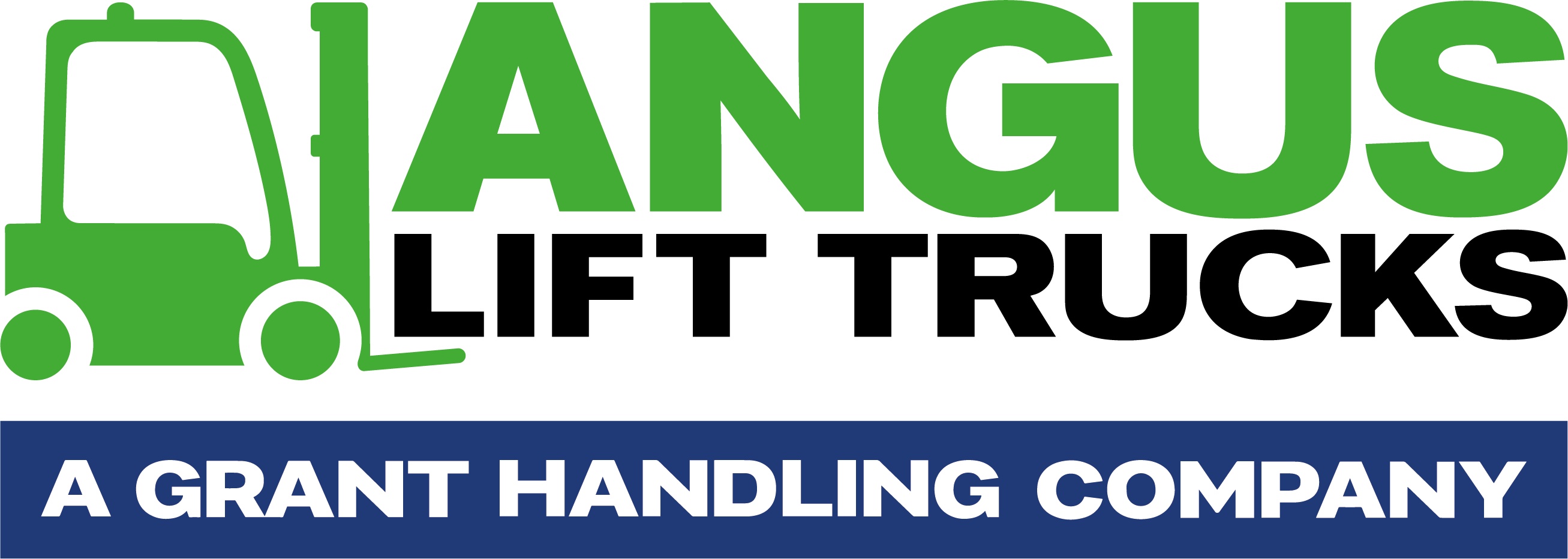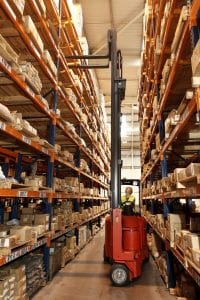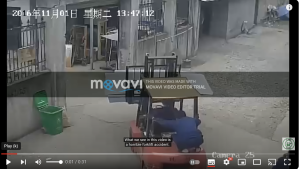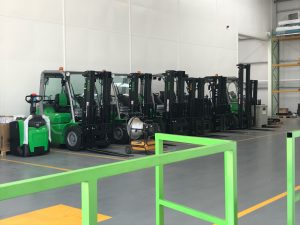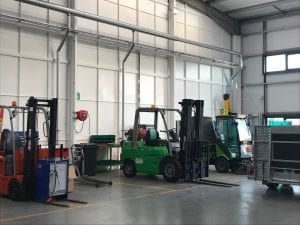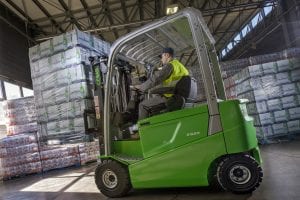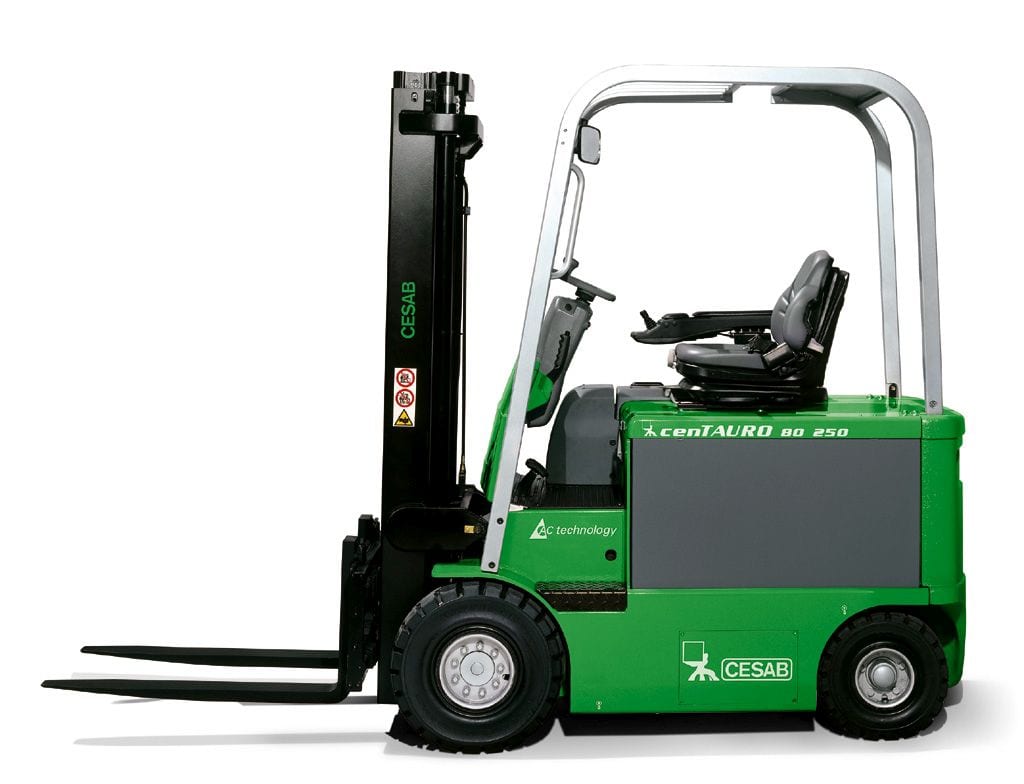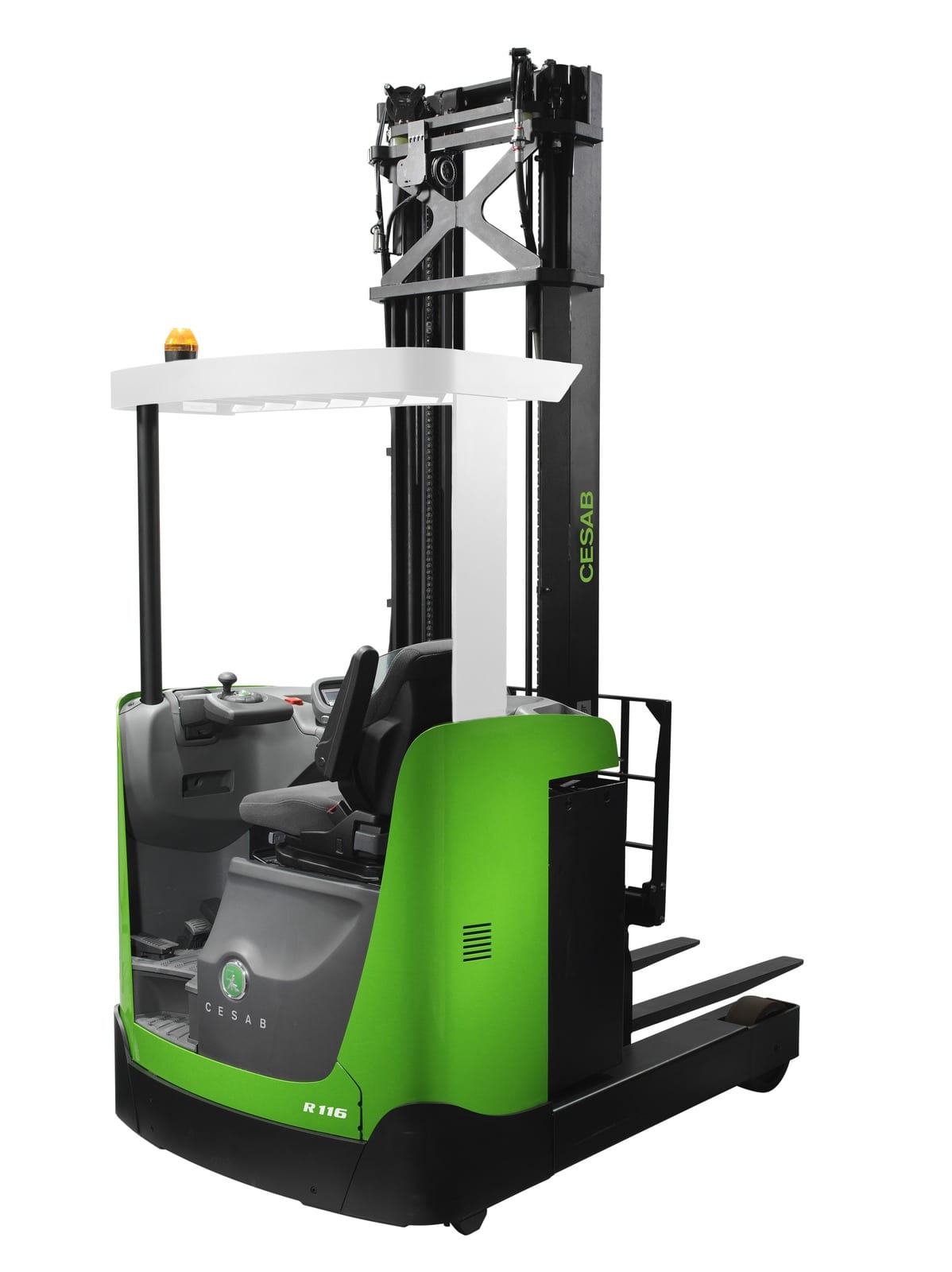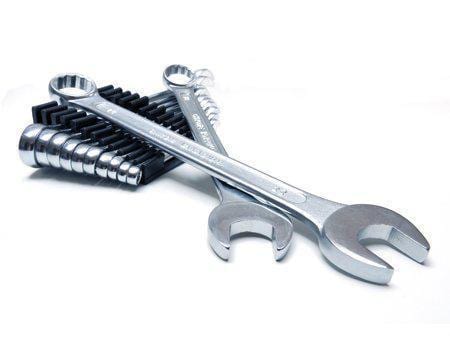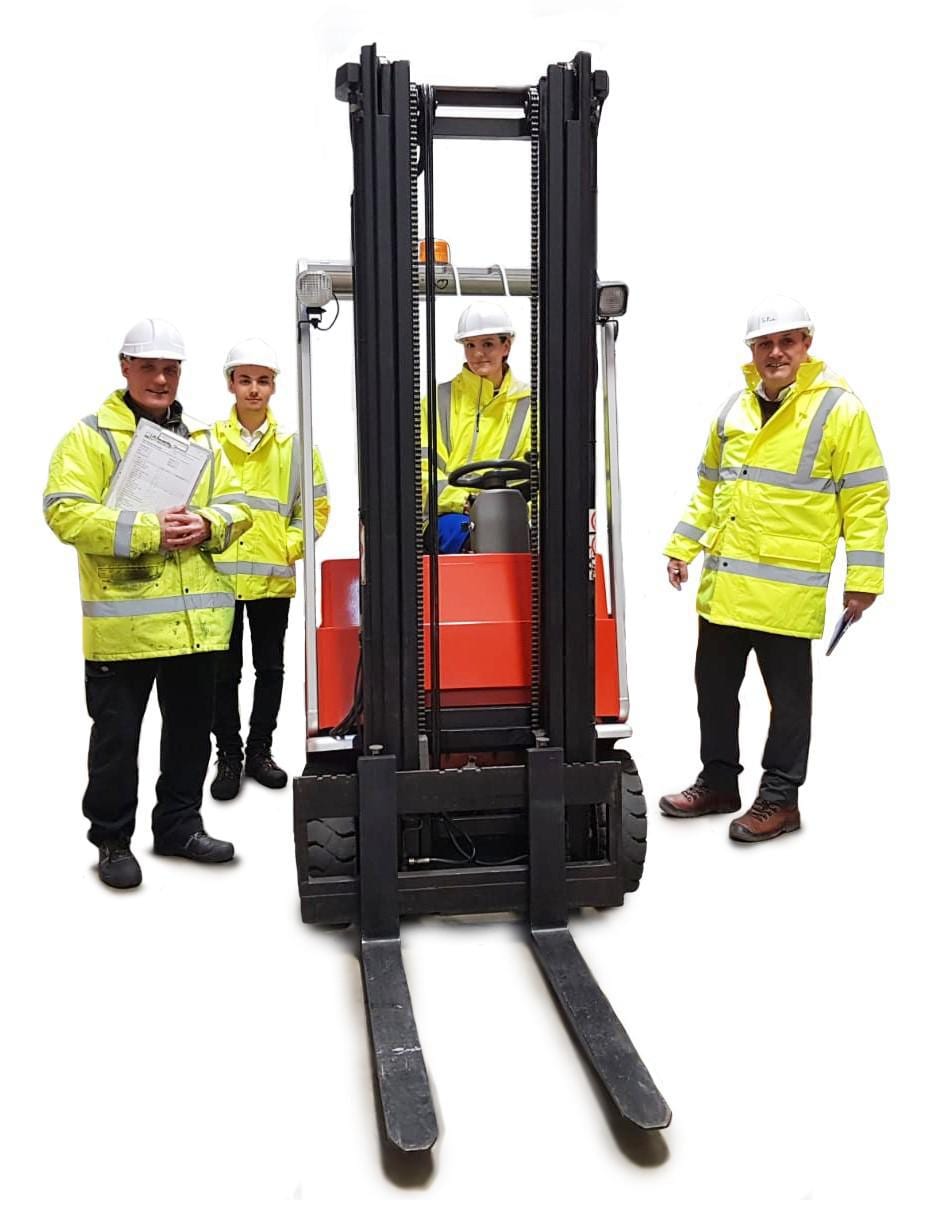If you’re looking to learn about forklift safety procedures, there are many different things to consider. Firstly, there’s the legal side of things. What are the rules and regulations, and what are the penalties if you don’t follow them? Then there’s forklift safety tips to consider that will help you make your place of work safer. You need to know about forklift safety checklists, forklift safety meetings, and forklift training. Finally, what can happen when forklift operation goes wrong?
That may seem like a lot of information, but our team at Angus Lift Trucks got it all covered here. This is our ultimate guide to forklift safety standards. Keep on reading to find out more about forklift safety guidelines.
Top 10 Forklift Safety regulations and guidelines you must be aware of
First things first, you need to know the forklift safety rules before you institute a forklift safety program. Breaching forklift safety regulations can lead to injury or even death, and result in the person responsible being fined or imprisoned. Here are the most important UK regulations regarding forklifts.
1. The Health and Safety at Work Act 1974
This law applies to any place of business but is especially important in forklift safety. Forklifts can be dangerous pieces of kit when used incorrectly, so before you allow your employees anywhere near a truck, you need to brush up on the Health and Safety at Work Act. Essentially the law places the onus on employers to ensure that employees are safe while they are at work.
2. Health and Safety Offences Act 2008
This act, passed 34 years after the original Health and Safety Act revises the penalties for Health and Safety offences, making them more severe. It raised the highest penalty for minor offences to £20,000 and gave judges the option to imprison employers who repeatedly flout the rules. Since operating forklifts can be extremely dangerous, it’s worth knowing the penalties for not correctly following health and safety laws.
3. Health and Safety Penalties
With the previous two laws in mind, here are some of the penalties a company or individual can face if found to be flouting health and safety regulations. If a case goes to Magistrate’s Court, a guilty party can be fined up to £20,000 and/or be imprisoned for one year. If it goes to Crown Court, the fine is unlimited and the maximum sentence rises to two years.
4. Corporate Manslaughter and Corporate Homicide Act 2007
This law is used to prosecute companies and managers whose actions lead to an employee’s death. This could cover cases where an employee dies through an accident that could have been prevented with better health and safety measures, or where a company knowingly puts an employee in danger and they die as a result. If found guilty of this crime, your company can face an unlimited fine, and the person or people responsible could spend time in prison.
In the world of forklifts, this is especially important. Forklifts can be dangerous, so employers must take steps to ensure that severe accidents are unlikely to happen.
5. Lifting Operations and Lifting Equipment Regulation (LOLER) 1998
LOLER is a series of safety regulations set out by the Health and Safety Executive (HSE) that specifically cover lifting equipment, including forklifts. These regulations state that any lifting operation must be properly planned, supervised, carried out safely, and by individuals who are properly trained. There is no legally binding ‘forklift license’ that operators must attain before working, but they must have had formal training in some form or another. Click here for further reading on LOLER.
6. Provision and Use of Work Equipment Regulations (PUWER)
PUWER is a set of regulations that covers any equipment used at work. These rules apply to any company that expects its employees to use any kind of work equipment. This applies to forklift trucks. The rules state that forklifts should be well maintained, frequently inspected, and used for the correct purpose. They also state that operators must be trained, and that unqualified individuals should not be allowed to use them. You can find out more about PUWER here.
7. Seatbelts on forklifts
One section of the PUWER regulations that’s worth highlighting individually is the seatbelts rule. Since 2002, PUWER has stated that forklift operators must wear a seatbelt at all times. This rule is quite commonly flouted by forklift operators, so you need to create rules that insist that they wear seatbelts.
8. Red Diesel regulations
In 2003, rules came into effect that essentially banned the use of Red Diesel in the UK. You can only legally use it if you get explicit permission from HM Customs and Excise (HMCE). So, if you are using Red Diesel in your forklifts, you should either stop or attempt to get permission from HMCE.
9. Driving Forklifts on the Road
If you are expecting your employees to drive a forklift on the road, there are a number of things you should consider. Firstly, it’s worth remembering that any vehicle driven on the road is subjected to DVLA rules. So, while a forklift operator doesn’t require a driving license to operate it on private property, they will need one to drive it on the road. As an employer, you may also need to make adjustments to the forklift to make it road legal. This is for forklift and pedestrian safety purposes.
Make sure to put out forklift warning signs wherever there are likely to be forklifts operating. You may also consider installing a forklift pedestrian warning system.
10. DVLA Driver’s Medical Unit
The Driver’s Medical Unit at the Driver and Vehicle Licensing Agency (DVLA) has published a guide on assessing a driver’s fitness to drive.
Technically, a forklift operator does not have to meet these requirements to drive a forklift truck. However, it’s well worth following these guidelines to ensure the safety of your employees.
Looking to Buy or Hire

a forklift?
With 35+ years of experience, we offer our most competitive rates, flexible finance, 4h service promise & more!
Why Forklift Forklift Health and Safety Rules are Important to Follow
Increasing competition, tight deadlines, and a drive to achieve greater efficiency are just some of the pressures that affect workers in warehouses, construction sites, manufacturing plants, and beyond. Meeting these expectations can lead to taking shortcuts or disregarding best practices, with fatal results.
As any good forklift operator knows, there are an almost endless amount of hazards that come with the profession. Poor loading practices, ignoring maintenance schedules, overspeeding, and unprofessional messing around are just a few examples of little things that can spin out of control.
A good forklift health and safety policy is designed to keep both you and those around you safe. The three main threats that you need to avoid are:
- Being crushed between a forklift and another surface
- Being hit by a speeding forklift
- Being struck by an object as a result of poor forklift truck material handling.
Here are four reasons to follow forklift health and safety rules.
#1. Reduce fatalities and injuries
Accidents as a result of operating heavy machinery are sadly common. However, with the right forklift truck training, you can greatly mitigate the risks and reduce fatalities. The health and safety of employees should be paramount to any organization. That starts with proper education and enforcement of forklift truck health and safety policy.
#2. Legal compliance
Forklift rules and regulations in the UK exist to ensure that the workplace is safe for all employees. The right to a safe workplace is not just about implementing good practices; it’s also a legal requirement. The HSE estimates that lift trucks are involved in about 1 in every 4 workplace transport accidents. If anything happens and proper procedures have not taken place, your business could face a large fine.
#3. Reduced downtime and material loss
Accidents in the workplace can range from seemingly innocuous to highly serious. However, even minor accidents cause downtime for your workers and your operation. Unsafe forklift truck operation can cause damage to your materials and even the loss of goods. Minor accidents can lead to injury and time off, which can hurt your staff levels and productivity. Well-trained forklift truck drivers can avoid most of these situations, leading to more efficient operations.
#4. Happier workers
Some workers express feelings of inconvenience about strict adherence to, for example, the HSE forklift truck daily checklist. However, the alternative is far worse. Implementing forklift safety equipment or forklift safety devices shows you care about the health of your workers, which leads to greater confidence and morale.
Forklift truck cameras, load sensors, and proximity warning indicators are worthwhile investments that you can make to demonstrate your commitment to running a safer warehouse.
Top 11 Forklift Safety Tips You need to follow
Now that you know the law, here are a few safety tips you can follow to keep your staff safe, and make sure your company is operating within the law.
1. Train your staff on forklift safety rules, procedures & regulations
Before a member of staff goes anywhere near a forklift, you need to make sure they have had the proper forklift training. Even though there is no legal requirement for your staff to be trained, putting them behind the wheel of a forklift without the proper training puts them – and others – in serious danger. Place forklift safety stickers in the cabs of the trucks to remind them of their safety duties.
Proper Training is the first step to ensure safe forklift operation. While an operator doesn’t need a license, they still should go through extensive training before ever operating a forklift.
Forklift training should include safety procedures, pre-operation checklist review, operation training, and practice operation. An untrained operator is a huge risk and could cause serious injury to coworkers or damage to your business.
2. Provide PPE
You should provide forklift safety equipment, such as hi-vis jackets, hard hats, steel toe-capped boots, and clothing that isn’t baggy. These should all be provided by the employer, it is not the employee’s responsibility to do so.
Personal protective equipment (PPE) should always be worn on any worksite. Employers should provide all the equipment needed to operate a forklift safely.
- Hard hats are required for construction, development, and warehouse work.
- Steel-toe safety shoes will reduce puncture and crushing wounds to the feet.
- Hi-Vis jackets ensure every employee is easy to see and will reduce accidents.
- Tight-fitting clothing reduces the risk of clothing getting stuck in machinery.
3. Do a quick safety inspection before driving the forklift
Before operating a forklift, your employees should be trained to do quick inspections before they sit behind the wheel. They should check all aspects of the forklift, including the tyres, the steering wheel, the brakes, the lifting mechanism, and the controls before getting started. This should only take a few minutes and is an important health and safety procedure. Keep a forklift maintenance log so that staff can keep track of any issues with a particular truck.
In brief, before starting a forklift, you should follow a pre-operation safety checklist. Every driver is different, and most modern forklifts will allow you to find the perfect position for safe and effective forklift operation.
- Ensure the forklift is on flat ground.
- Check the wheels to ensure they are in good condition and fully inflated.
- Inspect the forklift’s body for damage and hydraulics for breakages.
- Check safety devices, set mirrors to your height, and adjust the seat to a comfortable position.
- Verify that you have 360-degree visibility before operation.
- Remove loose items from the cab.
- Finally, check the safety lights, horn, steering, and brakes before operation.
4. Inspect your forklifts more thoroughly
On a less frequent basis, your forklifts should be inspected more thoroughly by a qualified engineer. This will help to find any more serious problems that can’t be identified by a quick daily check.
Daily use of any vehicle will result in wear and tear. It’s extremely important to maintain and provide regular inspections of your forklift to reduce accidents. A trained professional forklift mechanic should perform regular inspections of your forklift’s brakes, steering, controls, warning devices, mast, and tires. If any issues are found, you should immediately remove the forklift from use and repair it. Don’t forget to maintain an inspection and maintenance record for the forklift as well.
Looking to Buy or Hire

a forklift?
With 35+ years of experience, we offer our most competitive rates, flexible finance, 4h service promise & more!
5. Be aware of your surroundings when operating a forklift
Chances are, whenever you operate a forklift there will also be others on-site, either on foot or operating forklifts of their own. Being aware of your surroundings is essential. Carelessness is a common cause of accidents, so always be alert when operating forklifts.
Many forklift accidents are due to poor spatial awareness. Did you notice a blind spot during your pre-operation checklist? You should resolve the issue before starting the forklift. Be on the lookout for anything that might hinder your operation or cause an accident.
Your workplace should be covered in safety signs that will warn you of low ceilings, doorways, ramps, and exclusion zones. Always follow instructions on these signs to avoid any type of accident or mishap while operating a forklift.
6. Load the forklift safely
When loading the forklift, there are a few safety concerns you need to consider. The primary one is to ensure that the forks are all the way under the load before lifting. Failing to do so can cause the load to fall, and could even cause the forklift itself to tip over.
Many forklift operators will try to rush work and operate with unsafe loads. This is a recipe for disaster and could cause damage to your load, forklift, or injuries to you and other employees. Always follow the load limits of your forklift model.
- Loads should be tilted slightly toward the vehicle.
- Always operate the vehicle while the forks are low.
- Correctly stack the load across both forks.
- Pallets are one of the best ways to balance a load.
- Watch out for low ceilings when stacking a large load.
- Ropes and straps can be used to secure the load.
- Never overload a forklift nor exceed its maximum weight capacity.
7. Avoid any hazards
Be aware of the environment you’re operating in, and avoid any obvious hazards. This includes any bumpy sections on the floor, any items that could be knocked loose, or any slippery surfaces. You should also keep a safe distance from other forklifts and people, and use the horn to alert others to your presence when going around corners.
8. Ensure you have good visibility
While in control of a forklift, you should be able to have 360-degree visibility with no blind spots. If this is not the case, you should fix the issue before starting the engine. Additionally, if you require glasses or contact lenses, you should wear these at all times when operating a forklift.
Poor visibility causes many accidents. Whether it’s due to a large load or operating in smaller spaces, you should only operate a forklift while you have good visibility. Don’t hesitate to stop, get out of the forklift and check your surroundings to verify it is safe to drive through the area.
Good load positioning can ensure you have a clear view while heading forward. Sometimes, you may have better visibility while operating the forklift in reverse.
9. Be aware of the capacity of the forklift
All forklifts have a maximum weight they can carry, and as an operator, you need to be aware of this. Forklift safety awareness is key. Attempting to lift a load that is beyond the safe capacity of a forklift can cause accidents that are a danger to the driver and others in the vicinity.
Moreover, never carry extra people. Picking up passengers on a forklift should be avoided at all costs. Do not allow coworkers to hop on the load, forks, or driver’s seat during any forklift operation.
10. Drive at a safe speed
Many experienced forklift drivers get over-confident and drive around the warehouse at pace so they can get their work done more quickly. This is extremely dangerous and can cause injury or even death. Your warehouse should have an enforced speed limit, and there should be penalties for staff who break it.
While most driving is on flat surfaces, a forklift operator has to be prepared to operate on inclines and declines. You should take extra precautions while operating a forklift on an inclined surface. Proper balancing of the forklift and load is essential to reduce the risk of accidents during ramp operation.
- While going up a ramp, travel forward with the forklift.
- While going down a ramp, a forklift operator should travel in reverse.
- Always maintain visibility in the direction you are going.
- Avoid the edges of the ramp and never change direction while on a ramp.
11. Observe good post-task practices
Once an operative’s task is complete, the job is not quite finished. You should always return the forklift to its designated area and make sure it’s safely parked and out of the way. If one operative is taking over from another in the middle of a shift, you should ensure they have adequate time to adjust the mirrors and seat and check the machine within a safe area. You should follow these practices, even if it means operational downtime.
Forklift Safety Checklist
Before operating a truck, you should carry out a forklift safety inspection. This is important for safety, but also forklift protection:
- Carry out an inspection in a safe area out of the way of other vehicles.
- Check that the forklift is sitting flat on the ground and not leaning one way or another.
- Check that the wheels are in good condition.
- Kick the tyres to check if they are fully inflated.
- Check that any forklift safety devices are in good working order.
- Check that the driver’s mirrors are secure and clean.
- Check that the forklift’s body work is secure. If anything looks likely to fall off, do not operate the vehicle.
- Ensure that the driver’s seat is comfortable and adjusted to your comfort.
- Check hydraulics for any breakages or build-up of dirt that may cause them to fail.
- Check that the driver will have 360-degree visibility.
- Remove any loose items in the cab. These could cause injury if the driver has to make an emergency stop.
- Check the forklift safety lights.
- Test the horn, the steering, and the brakes.
- Check that the forklift fire extinguisher is present and undamaged.
- You’re ready to go!
Looking to Buy or Hire

a forklift?
With 35+ years of experience, we offer our most competitive rates, flexible finance, 4h service promise & more!
Top 10 Forklift Safety Accidents we saw online
What can happen when it all goes wrong? Forklift accidents can be very serious indeed. At best, they can cause serious damage to company property and at worst they can result in loss of life. Here are the top 10 forklift safety accidents we saw online.
1. Forklift operator crashes into shelves:
2. Forklift operator spills molten metal:
3. Forklift crushes worker:
4. Forklift operator overloads forklift:
5. Forklift operator falls asleep at the wheel:
6. The forklift driver isn’t aware of surroundings and causes a huge accident:
7. Forklift operator drops product:
8. Forklift driver reverses too fast:
9. Forklift driver destroys pond:
10. We have no idea what they were trying to achieve here, but this is a health and safety nightmare:
Forklift Safety Kit
A forklift safety kit should include any items the operator may need to carry out their tasks safely. This includes any PPE, such as high-vis clothing, hard hats, steel toe-capped boots, and work-appropriate clothing. It should also contain training literature that sets out all of the safety rules.
What should a Forklift safety policy contain?
Your company should have a forklift safety system that sets out the rules of using forklifts safely and effectively. You should also consider punishments for people who flout the rules, as accidents in the warehouse can be fatal. To remind staff of the rules, it’s worth putting up forklift safety signs.
1. Speed limits
Just as on the roads, speeding in the warehouse can kill. You should instate a speed limit, and set up penalties for operators who breach this rule.
2. Forklift Safety Training as a requirement
Staff who haven’t been trained shouldn’t be allowed anywhere near a forklift. If you find out that an untrained member of staff has operated a forklift, you should start an investigation into them and their manager to find out how it was able to happen, and hand out punishments accordingly. Put up a forklift safety poster to remind staff of their duties ongoing.
3. PPE requirements
It’s a legal requirement for employers to provide PPE for their employees. You should create forklift safety standards that oblige employees to wear PPE for their own safety.
4. Inspection mandate
One of the many forklift safety procedures you should implement is the mandatory inspection of forklifts every time they are used.
5. Hazard minimization rules
In every warehouse, there are a number of potential hazards that forklift drivers will need to keep an eye out for. You should take steps to ensure that there are as few hazards as possible.
6. Operator integrity
If an operator reports to work and appears to be sleep-deprived or intoxicated, they should be sent home immediately. If an operator is tired, they should be fine to operate a forklift again once they’ve rested. If they reported to work intoxicated, they should be suspended from operating forklifts pending an investigation. Intoxicated operators can cause accidents due to recklessness, so this is a very serious lapse in professionalism on the part of the driver.
7. Forklift seat belt safety
A seatbelt is absolutely essential. Forklift crashes can be every bit as deadly as car crashes, so make sure your employees know that they are required to wear a seatbelt at all times.
8. Have your forklifts professionally inspected
Every now and then, you should invite a professional engineer on-site to do a full inspection of your forklifts. This will help to identify any issues that aren’t visible to the naked eye.
9. Set out loading guidelines
An overloaded forklift, or a poorly loaded forklift, is a serious health and safety risk. In both instances, the load can fall off, and it can even cause the entire truck to tip over. Needless to say, this is a serious health risk. Set out clear loading guidelines, and ensure that staff have been trained and understand them.
10. Prohibit staff from fixing forklifts unless qualified
If a member of staff notices an issue with a forklift when they do their daily checks, they should not be allowed to attempt to fix it themselves unless they are qualified. While they may think they can fix it, it’s more likely they’ll make the problem worse and put themselves and their colleagues in danger.
Forklift Safety Meeting format
You should hold regular forklift safety standards briefings to ensure that your staff are both aware of, and following the rules. You should break this down into three sections.
1. Forklift Safety Rules recap
First things first, recap the rules as laid out in your forklift policy. It doesn’t matter if your staff have never heard this or heard it a million times. You should briefly explain what the rules are, and what the penalty is for breaking them.
2. Any incidents from the last week
If there were any incidents the previous week, you should bring them up and discuss what happened, how it happened, and how you can avoid it happening again. This could include any breach in the rules, even if no accidents occurred. For example, if some members of staff are repeatedly breaching the warehouse speed limit, you should highlight this and remind staff of their duty to remain within the speed limit for the safety of them and others.
3. What the team is doing right
You should always end the meeting on a positive note and highlight a few things the team has done right recently. This is so you can positively reinforce good behaviours, in the hope that they will be repeated.
Looking to Buy or Hire

a forklift?
With 35+ years of experience, we offer our most competitive rates, flexible finance, 4h service promise & more!
Forklift Training Guidelines
While there is no official ‘forklift license’ in the UK, forklift operators are expected to undertake forklift safety training, so that they can properly follow forklift safety rules. Here is a guide to forklift training for employers and employees alike.
1. Forklift trainers must be qualified
In order to lead a forklift training session, the trainer must be professionally accredited. This means that you can’t just have someone in-house show them how to do it unless they are qualified. In many cases, this means you need to hire someone externally who is qualified to teach forklift safety procedures. Make sure they have a forklift safety certification before hiring them.
2. What should training include?
Any reputable training course should contain three elements. Firstly, it should teach candidates the basics of forklift operating procedures. This includes a mixture of theoretical and practical work. Secondly, candidates will learn specific skills that will help them operate a forklift, such as learning how to operate the lifting mechanism. They may also be shown forklift safety videos. Finally, candidates will carry out exercises under supervision that allow them to put into practice what they’ve learned.
2.1 Testing
At the end of the session, the trainer will assess the performance of each of the candidates to determine whether they are fit to qualify as a forklift driver. They will then take a forklift safety test to make sure they’ve taken in all of the relevant information. If they fail the test, or the trainer finds them unfit to qualify, they will not pass the training session and will have to attend another one in future.
2.2 On the job monitoring
Once a forklift operator has been qualified, they should be monitored on the job by a more experienced member of the team until they can be trusted to carry out their responsibilities on their own.
2.3 Refresher training
Education is a lifelong pursuit, and because of this you should make sure that your forklift operators attend refresher training every few years. This will ensure that their skills stay sharp, and they are up to date on the latest health and safety best practices.
You may also like
Commonly asked questions on forklift safety
Here are some of the most commonly asked questions about forklift safety in the UK.
1. What is forklift safety?
Forklift safety is a series of rules and regulations that companies must put in place to ensure that their employees will be safe when operating forklift trucks. If mishandled, forklifts can cause life-threatening accidents, so it is vital that employers take steps to keep their staff safe.
2. How often should a forklift be serviced in the UK?
Forklifts should be checked every time they are used to look out for any faults that can be fixed. If any faults are found, the forklift should be serviced immediately and not used until those faults are fixed. If no issues arise, you only need to get your forklift serviced once per year.
3. Do you have to wear a seatbelt on a forklift in the UK?
Technically, yes. While this is not enshrined in law and you will not face legal action if you don’t wear a seatbelt, your employer could get in serious trouble if you don’t wear a seatbelt. Also, if you are driving the forklift on the road it is technically classed as a road vehicle, so the normal driving rules apply. In this case, you must wear a seatbelt.
4. Can you drive a forklift without a license in the UK?
Technically yes, but this doesn’t mean you should. There is no official forklift license, which means that it’s not illegal to drive a forklift without any training. However, it is incredibly dangerous.
If you are driving a forklift on the road, however, you must have a driver’s license, just as you would have to if you were driving a car on the road.
5. How to improve forklift safety?
There’s no easy answer to this question. There are many different ways that a forklift can be dangerous, so there are many different things to consider. However, if you’ve read through this entire article to get to this point you should have a pretty solid idea of what you’re getting right, and where you’re going wrong.
6. What forklift safety glasses should I wear?
Generally speaking, you do not need to wear safety glasses when operating a forklift. However, you may have to if your place of work has dust or other airborne foreign objects that could cause damage or irritation to your eyes. The key thing here is to do a health and safety assessment and trust your judgment.
Always be prepared when operating a forklift.
It’s always best to be prepared for any issue that might arise. The above list of tips will help prepare you and make you a better forklift operator.
Finally, if you require forklift training in Leicestershire, Nottinghamshire, Northamptonshire, Birmingham, Warwickshire, Derbyshire, East Midlands & West Midlands., Angus Lift Trucks can deliver any RTITB and CPC accredited forklift training both on-site and off-site. We also provide access platforms , floorcare equipment, and forklifts for sale & hire
This post is also available in:
Français
Deutsch
Português
Polski
Русский
